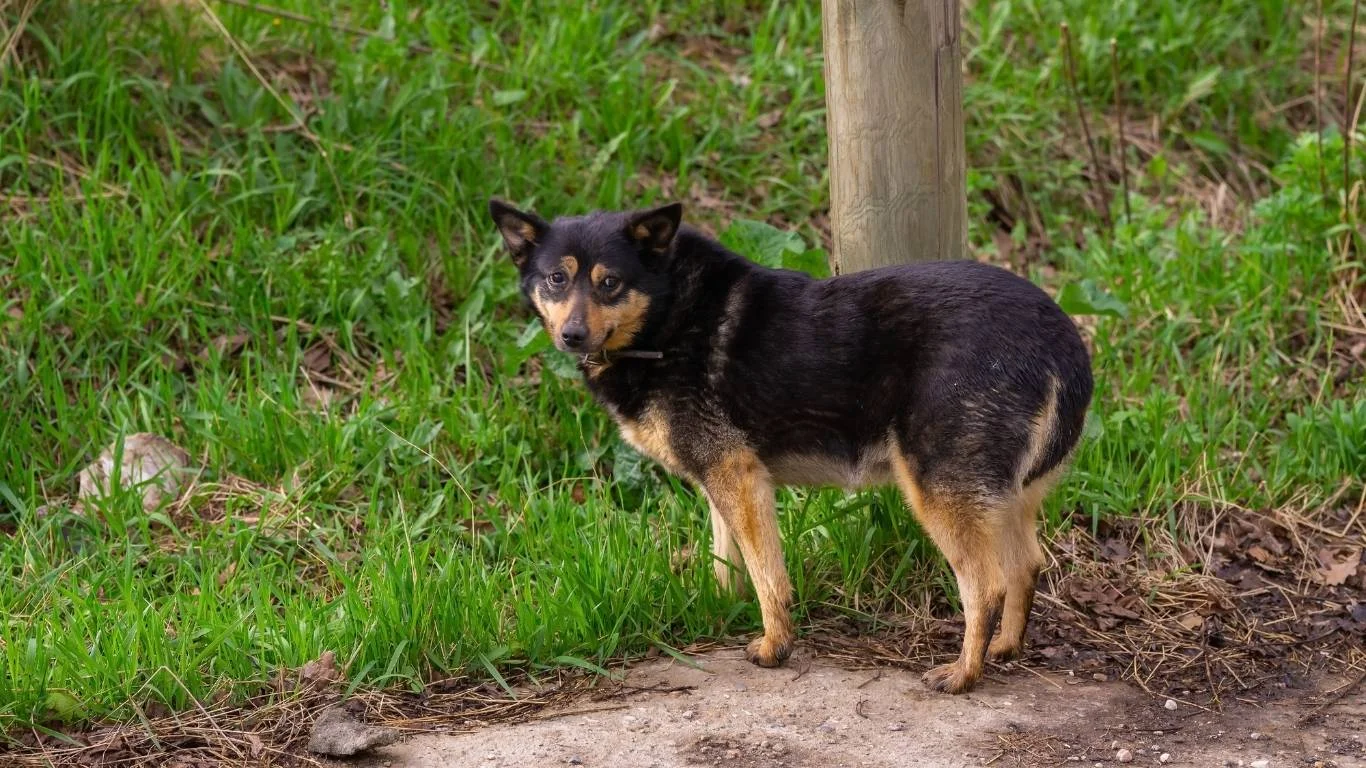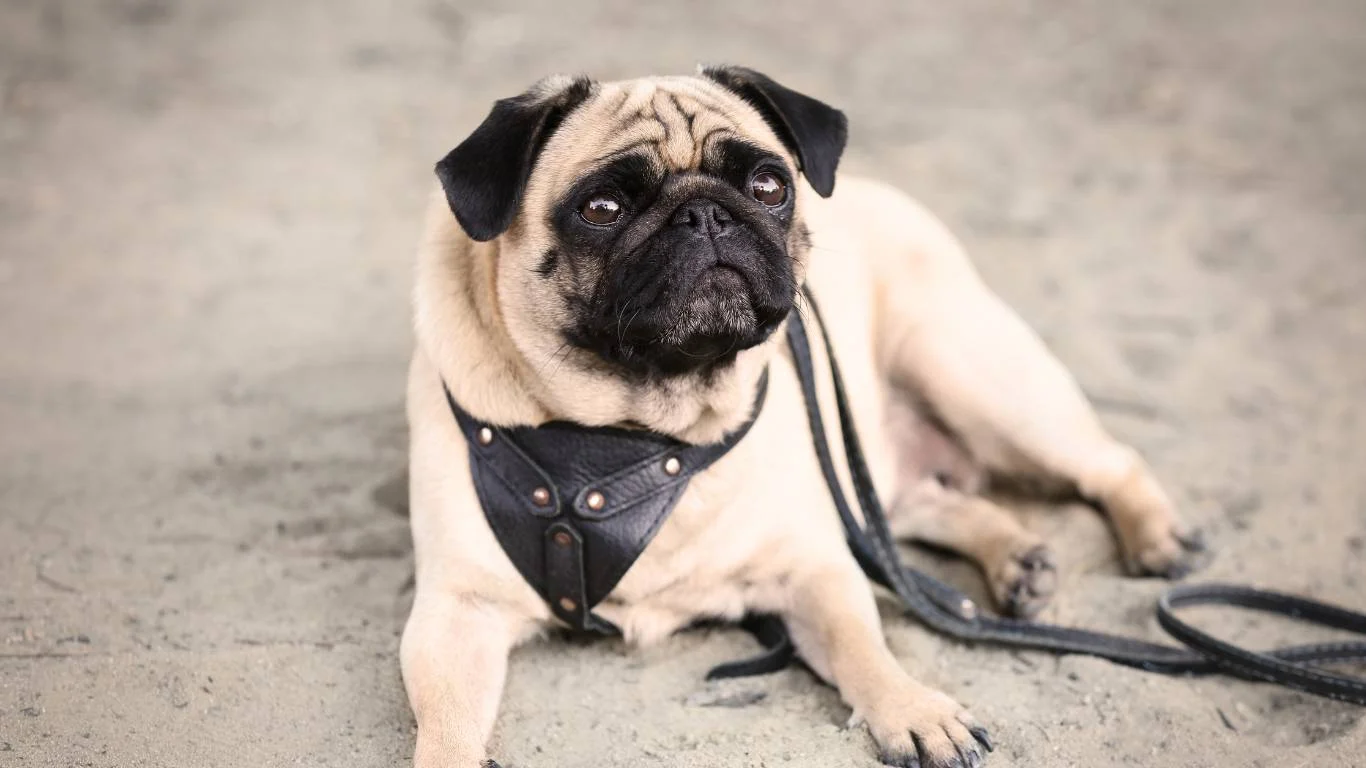What to Do If Your Dog Has a Swollen Paw: Quick and Effective Solutions
As a veterinary assistant with a focus on nutrition, I’ve seen my fair share of cases where dog owners panic when they notice their furry friend’s paw swelling. It’s a scary sight, and naturally, you start wondering what went wrong. I’ve been in that exact situation with my own dogs, and trust me, I understand the concern. But don’t worry, it’s not always as dire as it seems! In this guide, we’ll walk through the steps you should take if you ever find yourself asking, “What to do if your dog has a swollen paw?”—and it’s not just about knowing what to do in an emergency, but also how to prevent these situations in the future.
Understanding Swollen Paws in Dogs: What’s Really Happening?

When you spot your dog limping or favoring a paw, it could be a sign that something’s not right. Swollen paws are often a result of injury, infection, or even a hidden condition that may need medical attention. But don’t immediately jump to conclusions—first, let’s break down what could actually be going on.
Common Causes of Swollen Paws in Dogs
Swollen paws in dogs can happen for various reasons. The most common causes include:
- Injury: Dogs love running, jumping, and playing, which means their paws can get injured—whether it’s from stepping on something sharp, getting a cut, or a bruise that causes swelling.
- Infections: Just like humans, dogs can get bacterial or fungal infections in their paws. If your dog’s paw is red, warm to the touch, or has pus, this could be the case.
- Allergic Reactions: Allergies to certain plants, chemicals, or foods can cause swelling in a dog’s paws. This is often paired with itching or licking.
- Arthritis or Joint Issues: Older dogs, in particular, may develop arthritis or joint problems that can lead to swelling, especially in one or more paws.
- Insect Bites or Stings: If your dog has been out and about, there’s a chance they could have been bitten by an insect. While some bites cause minor irritation, others can lead to swelling.
- Abscesses or Cysts: Occasionally, a fluid-filled sac or abscess may form in a dog’s paw, causing noticeable swelling. These are often painful and may require veterinary intervention.
How to Tell If Your Dog’s Paw Needs Immediate Veterinary Care

While some cases of paw swelling can be resolved at home, others may require immediate attention. So, how can you tell the difference? Here are some signs that you should get your dog to the vet ASAP:
Signs of Serious Injury or Illness
- Severe or Sudden Swelling: If the swelling seems to appear quickly and is very pronounced, it could be a sign of a more serious issue, such as a fracture or a severe infection.
- Fever: If your dog has a fever (which you can usually tell by their warmth, lethargy, or loss of appetite), it may indicate an infection that needs to be treated by a professional.
- Excessive Licking or Biting: If your dog is obsessively licking or chewing on their paw, this could be a sign of pain, and they may need pain relief or a treatment plan.
- Discoloration: If your dog’s paw looks discolored (e.g., black or purple), it could mean there’s a bruise, severe infection, or trauma, and it’s time to call the vet.
- Non-Weight Bearing: If your dog is refusing to put any weight on the swollen paw, this could indicate a sprain, fracture, or more serious injury that requires immediate veterinary attention.
What You Can Do Immediately at Home

If your dog’s swelling seems mild or doesn’t appear to be caused by a major injury, there are a few things you can do at home to help ease their discomfort and prevent things from getting worse. Here’s a simple guide for what you can do right away:
Step 1: Examine the Paw
Gently check for any visible injuries, foreign objects (like a thorn or a splinter), or signs of infection (such as redness, pus, or discharge). Be careful not to cause your dog any more pain during this process. If your dog is in severe pain, don’t force the examination—this is when it’s best to see a vet right away.
Step 2: Clean the Area
If you find any dirt or debris, you can clean the area using warm water and a gentle antiseptic solution like diluted betadine. This helps to remove bacteria and dirt that could lead to infection. Avoid using hydrogen peroxide, as it can damage healthy tissue.
Step 3: Apply Cold Compress
Using a cold compress can help reduce swelling and pain. Simply wrap a few ice cubes in a towel and gently apply it to the swollen paw for 10-15 minutes. Never apply ice directly to your dog’s skin, as it could cause frostbite.
Step 4: Limit Movement
To prevent further injury, try to keep your dog from running or jumping too much. Leash walks or even crate rest might be necessary to give your dog’s paw a chance to heal.
Step 5: Monitor for Changes
Keep a close eye on the swelling and your dog’s overall behavior. If the swelling doesn’t go down after a few hours or if it worsens, it’s time to reach out to your vet. It’s always better to err on the side of caution.
Remember, while these steps might help in the short term, you should still contact your vet for a proper diagnosis, especially if the swelling doesn’t improve or you notice any other concerning symptoms.
When to Seek Professional Help for Your Dog’s Swollen Paw

As much as we’d like to think we can handle everything ourselves, there are times when it’s best to call in the professionals. If your dog’s paw swelling doesn’t seem to improve after a couple of days or if you notice any alarming changes, it’s time to contact your vet for a more thorough examination. Trust me, I’ve been in situations where I initially thought it was just a minor issue, only to realize my pup needed immediate attention.
What Happens During a Veterinary Exam?
If you do head to the vet, don’t worry—they’ll know exactly what to do. The exam will usually involve:
- Physical Examination: The vet will carefully examine the swollen paw to check for signs of trauma, infection, or foreign objects lodged in the paw. They’ll also gently palpate (press) on the area to determine if there’s any pain or fluid buildup.
- X-rays or Imaging: If your dog is showing signs of a fracture or a deep injury, your vet may recommend X-rays. These help rule out bone fractures or more serious internal issues that might not be immediately visible.
- Swab or Culture: In cases of infection, the vet might take a sample of any discharge or fluid and send it off for analysis. This helps them figure out what kind of bacteria or fungus is at play and which antibiotic would be most effective.
- Blood Tests: For certain conditions, like autoimmune diseases or more serious systemic issues, blood tests might be required to understand what’s causing the swelling.
After the exam, your vet will discuss the findings with you and recommend the best course of treatment. Depending on the cause of the swelling, treatments can range from basic home care instructions to more advanced interventions like antibiotics, pain management, or even surgery in extreme cases. So don’t hesitate to get a professional’s opinion if the issue seems serious or if you’re unsure.
Treating a Swollen Paw: What Your Vet Might Recommend

So, what might happen after the vet confirms what’s causing the swelling? Treatment can vary widely based on the underlying issue. Here’s a breakdown of what you might expect:
1. Pain Relief and Anti-Inflammatory Medications
If your dog’s paw is swollen due to an injury or inflammation, your vet may prescribe painkillers and anti-inflammatory medications. These drugs help manage discomfort and reduce swelling. Some common medications include:
- NSAIDs (Non-Steroidal Anti-Inflammatory Drugs): These help reduce both inflammation and pain. They’re often prescribed for conditions like arthritis or soft tissue injuries.
- Opioids or Sedatives: In some cases, where the pain is more severe, your vet may prescribe stronger pain relief medications to keep your dog comfortable.
- Topical Creams: For minor injuries or external irritations, your vet might suggest an ointment or cream to apply directly to the paw.
2. Wound Cleaning and Bandaging
If there’s an open wound, infection, or foreign object in your dog’s paw, your vet will thoroughly clean the area to prevent bacteria from entering the wound. Afterward, they may bandage the paw to keep it protected while it heals. This is especially important if your dog is prone to licking or chewing at the injury.
When I worked at the clinic, I would often remind owners to keep the bandage dry and intact. Sometimes dogs get a little too curious and end up pulling at it, so keeping an eye on them is important!
3. Surgical Intervention (In Severe Cases)
While this is less common, surgery may be necessary if there’s a deep fracture, a serious infection, or a growth like an abscess or cyst that needs removal. The vet will only recommend surgery after thorough diagnostics, and you’ll be fully informed about what’s involved and the recovery process.
4. Antibiotics for Infections
If the swollen paw is caused by an infection (whether bacterial or fungal), your vet will likely prescribe antibiotics or antifungal medications. This treatment could be in the form of oral pills or topical ointments, depending on the severity and location of the infection. In some cases, your dog might need a combination of both.
One thing I always remind pet parents is that it’s important to complete the full course of antibiotics even if your dog starts feeling better before the medication is finished. Stopping early could lead to a relapse or antibiotic resistance, which is a whole new challenge to deal with!
Managing Swollen Paws at Home: What You Can Do Between Vet Visits

If your dog is prescribed treatment and you’ve received instructions from your vet, you’ll likely need to continue care at home. Here’s what you can do to support your dog’s healing process:
1. Follow Medication Instructions
As mentioned earlier, if your dog is prescribed medications, it’s crucial to follow the dosing instructions to the letter. If your dog is anything like mine, they might not be thrilled about taking pills, so try hiding them in something tasty (like peanut butter or cheese). Just be sure they actually swallow them!
2. Keep the Paw Clean and Dry
If your dog has a wound or infection, you’ll need to keep the affected paw clean and dry. Gently clean the area with a mild antiseptic solution as recommended by your vet. If a bandage was applied, you’ll need to make sure it stays dry, especially if your dog is outside a lot. You can even purchase waterproof booties for dogs if it’s rainy or muddy outside.
3. Limit Activity
Depending on the severity of the injury or swelling, your dog may need to rest. This means no excessive jumping, running, or playtime until they’re cleared by the vet. I know, I know, this is often the hardest part—especially if your dog is energetic and loves to play. But rest is vital for healing.
4. Monitor the Swelling
Keep an eye on your dog’s paw to make sure the swelling is going down. If it worsens or you notice any new symptoms, contact your vet immediately. I always say, “It’s better to be cautious than sorry.” Even small changes in behavior or worsening symptoms can give the vet important information to help your dog heal faster.
By following these steps and staying in touch with your vet, you’ll give your dog the best chance at a quick and full recovery. Remember, you’re not alone in this—veterinary professionals are there to guide you through the process and ensure your pup gets the best care possible.
Prevention Tips: How to Keep Your Dog’s Paws Healthy

While it’s never fun dealing with a swollen paw, the good news is that there are plenty of things you can do to prevent paw problems from happening in the first place. Over the years, I’ve learned some simple tricks to keep my dog’s paws in tip-top shape, and I’m happy to share them with you. After all, prevention is key, right? A little care and attention can go a long way in avoiding the need for emergency vet visits!
1. Regular Paw Inspections
One of the easiest ways to prevent paw issues is by making it a habit to inspect your dog’s paws regularly. I remember when my first dog, Charlie, had a thorn lodged in his paw—it wasn’t obvious right away, and he had started limping. A quick inspection caught the issue early, and we were able to remove the thorn before it caused more damage.
What to look for during your checks:
- Foreign Objects: Things like thorns, glass shards, or even small stones can get stuck in your dog’s paw pads.
- Cracks and Dryness: The skin on your dog’s paws can become cracked and dry, especially in cold or hot weather.
- Signs of Infection: Look for swelling, redness, or discharge that could indicate an infection.
- Excessive Licking: If your dog is obsessively licking one paw, it could signal an irritation or injury that needs attention.
2. Regular Paw Grooming
Paw care isn’t just about checking for injuries—it’s also about keeping the paws clean and tidy. Overgrown nails or hair between the pads can cause irritation or even lead to injury. Regular grooming is essential, and while I’ve always been a bit “extra” about grooming my pups, I can’t stress enough how it’s worth the effort in the long run.
- Nail Trimming: Keep your dog’s nails trimmed, but not too short. Long nails can cause discomfort, leading to improper weight distribution and increased paw strain.
- Hair Between Pads: Some dogs have more hair between their paw pads, which can trap dirt, debris, or even moisture that causes irritation. Regularly trim this hair to keep paws clean.
- Moisturizing Paw Balm: If your dog has dry or cracked paws, consider using a dog-safe paw balm to moisturize and protect the paw pads. Just like humans need lotion in the winter, your dog’s paws can benefit from some extra hydration!
3. Protecting Your Dog’s Paws from the Elements
Environmental factors play a huge role in the health of your dog’s paws. Whether it’s hot pavement in the summer or icy roads in the winter, your dog’s paws can suffer from exposure to harsh conditions. Over the years, I’ve discovered a few ways to protect my dog’s feet during extreme weather conditions:
- Booties: Dog boots are a great investment, especially if you live in a climate with extreme temperatures. They protect paws from hot pavement, snow, salt, and ice. Charlie, my older dog, wasn’t too thrilled with them at first, but after a few tries, he learned to walk in them like a pro!
- Temperature Awareness: Be mindful of the ground temperature. In the summer, pavement can reach dangerously high temperatures. A good rule of thumb is if it’s too hot for your hand, it’s too hot for your dog’s paws.
- Avoid Salt: During the winter, many areas use salt or chemicals to melt ice. While this is helpful for people, it can irritate your dog’s paws. After walks, always wipe down your dog’s paws with a damp cloth to remove any salt.
4. Healthy Diet for Healthy Paws
What your dog eats plays a big role in their overall health, including their paw health. A well-balanced diet helps support skin and coat health, and it can even contribute to stronger, more resilient paw pads. During my time as a veterinary assistant, I saw firsthand how nutrition can impact a dog’s overall health, including their paws.
For healthier paws, look for foods rich in:
- Omega-3 Fatty Acids: These are great for supporting skin and coat health. Foods like fish, flaxseed, and fish oil supplements can help promote healthy skin, which is important for preventing cracked or dry paw pads.
- Biotin: This B vitamin is essential for healthy skin and nails. If your dog is prone to cracked paw pads or paw dryness, a biotin supplement could be beneficial.
- Antioxidants: Foods rich in antioxidants, like blueberries and spinach, help support the immune system, which can help your dog fight off infections that may affect their paws.
When In Doubt, Trust Your Vet
While these prevention tips can help reduce the likelihood of paw issues, it’s important to remember that you’re not alone in your dog’s health journey. Vets are there to help guide you through every step, whether it’s preventing issues or dealing with them when they arise.
In my experience, one of the best things you can do for your dog is to stay proactive. Regular vet check-ups are just as important as routine paw inspections and grooming. And if your dog ever has an issue that’s beyond your ability to treat at home, never hesitate to reach out to your vet. They’re the experts, and they’ll have your pup’s best interests at heart.
References
If you’re looking for more information or expert advice on dog paw health, here are some resources I recommend:
- American Kennel Club – A trusted source for all things dog-related, from breed-specific tips to health and wellness advice.
- PetMD – Great for general pet health information, including articles on common paw problems and how to handle them.
- National Institutes of Health – For a deeper dive into health-related issues that might affect your dog.
- Health.com – A reputable source for overall health advice, including how environmental factors like temperature affect both you and your dog.
Disclaimer
The information provided in this article is for general educational purposes only. While I’ve shared my experience and knowledge as a veterinary assistant, every dog is unique, and you should always consult with a licensed veterinarian for specific medical advice, diagnosis, or treatment. Never disregard professional veterinary advice or delay seeking it because of something you read here.






